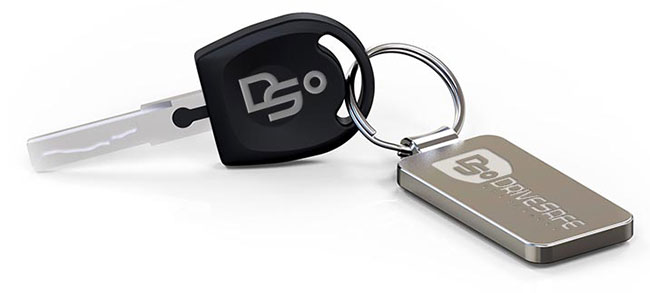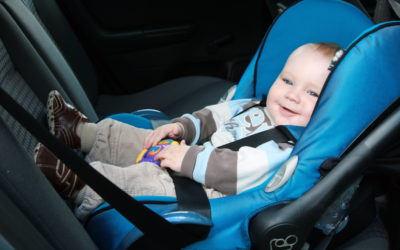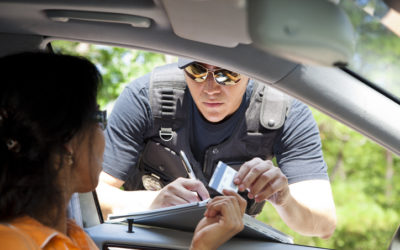Safely Handle Your Vehicle During a Tire Blowout
DRIVESAFE ONLINE DEFENSIVE DRIVING COURSES
Easy to Complete. Receive an Insurance Discount. Money-Back Guarantee!
Mobile-friendly viewing
Fully narrated video with closed captioning
Intelligent bookmarking to start/stop when you want
99% passing rate on user’s first attempt
Certificate emailed immediately after completion
Only $24.95
1-HOUR
6-HOUR
How to Safely Handle Your Vehicle During a Tire Blowout
Do you know how to survive a tire blowout on the highway? If not, then you must read this article before you drive again. Your life may very well depend on it.
Fortunately, it is possible to survive a tire blowout if you know what to do and have time to react.
We’ve written this guide to educate all drivers on what to do during a tire blowout. Even better, we also teach you how to prevent blowouts before they happen.
For your own safety, do not get behind the wheel again until you’ve read this guide.
Educate Yourself to Prevent Tire Blowouts
Knowing what to do during a tire blowout can save lives in a moment of crisis. (And we do cover that later in this post.)
But preventing that crisis from ever happening is even better. The first thing you can do to prevent tire blowouts is to educate yourself.

Know the Facts
This education starts with learning how serious tire blowouts can be. Consider these statistics about blowouts.
According to the National Highway Traffic Safety Administration, flat tires and blowouts cause over 78,000 accidents per year. Also, these accidents claim more than 400 lives and injure 10,275 people annually. Furthermore, tire-related factors accounted for 1 out of every 11 accidents (9%).
However, those estimates were reported way back in 2003. According to a more recent report, 738 people died from tire-related accidents in 2017.
Here are some additional interesting facts gathered by the NHTSA:
- Only 19% of drivers check their tire pressure properly
- 1 in 4 cars on the road has at least one tire that is significantly underinflated
- Making sure that your tires at properly inflated can save you up to $0.11 per gallon of gas
- Underinflated tires can lower your gas mileage by 0.3%
- Tires can lose about 1 pound per square inch (psi) of pressure each month
Here’s the most important statistic about tire blowouts. The number of blowouts that are preventable is nearly 100%.
Know the Causes
Next, it’s important to know what causes tire blowouts to understand how to prevent them. When you fully comprehend why this preventative maintenance works, you’ll be less likely to neglect it.
Here are the most common causes of tire blowouts:
- Worn out tires that are below minimum tread depth
- Under-inflated tires
- Over-inflated tires
- Slow leaks/flat tire
- Structurally compromised tires, including sidewall bulging and punctures that sever the bead (steel cords that reinforce the tire’s structure)
In addition, these conditions can be exacerbated by outside factors. For instance, the hot road on a summer day can make such a tire more likely to blow out. So can potholes, nails in the road, and other tire-damaging road hazards.
What to Do During a Tire Blowout
If your vehicle does suffer a blowout, your ability to act fast could mean the difference between life and death. So, before you learn what to do during a tire blowout, you should first learn to recognize what a blowout feels like.
What a Tire Blowout Feels Like
If you’re driving down the road and your tire suddenly goes flat, you’ll often feel a strong pulsing or rhythmic thudding from one side of the car and you may feel a strong pull in the direction of the blown-out tire. Now, here are the steps you should immediately follow when this happens.
Step 1: Stay Calm
First, remain calm. This keeps you in control of your actions so you can guide the car to safety without further complications.
Step 2: Correct Your Steering
Next, grip the steering wheel firmly and correct your steering. Drive straight and do not try to jerk the wheel suddenly. Jerking the wheel can cause a dangerous loss of traction that could result in a serious accident or rolling of the vehicle.
Step 3: Gently Decelerate
Do not slam on the brakes! Take your foot off the gas pedal and gently apply the brakes.
Step 4: Pull Over
When you’ve sufficiently slowed the car, ease to the side of the road safely away from traffic.
Additional Help
To help you understand this further, we’ve made this video to demonstrate these instructions
What to Do After a Tire Blowout
Here are the steps to take when you’re safely stopped after a blown tire.
Step 5: Warn Others
Put the car in park, activate the parking brake and turn on your emergency flashers. If you can safely do so, put road flares and/or safety cones around your vehicle. Leave yourself enough space within the cones/flares to change the tire.
Step 6: Change the Tire or Get Help
If you have a spare tire, plenty of safe work space and the ability/tools to change the tire, do so. If you are lacking any of these things, call for professional roadside assistance.
Preventative Maintenance to Avoid Blowouts
Now, let’s take a look at several preventative steps you should take to avoid tire blowouts.
Check Tire Pressure Often
One essential way to prevent blowouts is to make a habit of checking (and double-checking) your tire pressure often. Cars manufactured after 2007 make this easy.
In these cars, the tire pressure is monitored automatically by an electronic monitoring system. If tire pressure becomes higher or lower than is safe, the driver will be alerted with a “check tire pressure” notification on their instrument panel.
If your car was made before 2007, you’ll have to check manually. Although, even if your car is new, it’s good to do a manual air pressure check according to safety guidelines. It’s better to be safe than sorry.
What You’ll Need to Check Tire Pressure
The first action is to obtain a tire pressure gauge if you don’t already have one. These are easy to find and typically inexpensive (as in $1). You should be able to find an accurate tire gauge from the automotive section of any department store or discount outlet.
Next, know the correct tire pressure for your tires. This information should be found labeled in the doorway of the driver’s side door and your vehicle owner’s manual. You can also find online tools to learn optimum tire pressure.
But that information applies specifically to the standard wheels that come with the car. The recommended pressure range may be different if you have aftermarket wheels of a different size. You can most likely find the recommended pressure on the sidewall of the tire or get it from the manufacturer.
How to Check Tire Pressure
To check your tire pressure, unscrew the valve stem cap from one tire. Insert the gauge quickly and firmly until the initial hissing noise stops.
The meter on the end of the gauge should pop out partially and stop. The number it stops at is your current tire pressure. Check it one more time to make sure the reading was correct, then screw the valve stem cap back on.
Repeat this check on all four tires.
When to Check Tire Pressure
Now, here’s how often you should check your tire pressure. Obviously, check right away any time the tire pressure light on your dashboard comes on.
For older cars that aren’t equipped with tire pressure monitoring systems, you may want to check whenever you gas up. Gas stations usually have tire inflation stations.
Always check air pressure before and after long trips. Check during extreme temperatures and extreme temperature changes.
The loss of air pressure can be significant when the tires are cold. But when the weather warms back up, the air pressure rises and could cause over inflation. Not only that, but extreme heat also makes the rubber of the tires weaker and more likely to pop.
Check the pressure whenever your tire looks abnormal. If it is misshapen, swollen on the bottom, scratched, or you see a nail or other object that may have punctured it, check the pressure.
Lastly, check air pressure any time your driving doesn’t feel right. For example, if you feel thumping while you drive or differences in how the car handles, you may have a flat.
Don’t Neglect Regular Tire Maintenance
Besides incorrect tire pressure, a blowout can also happen when tires are too worn out. Avoid this by sticking to the appropriate tire maintenance guidelines provided by the manufacturers of both your vehicle and your tires.
Know Your Tires
There is a lot of information you should pay attention to when you purchase your tires. Most important is the recommended lifespan/mileage of the tires. If you don’t have this information, get it from the tire manufacturer or the retailer you purchased the tires from (or your car dealer if they’re the original factory tires).
If the tires aren’t the ones that came with the car, you’ll also need to find out when you purchased them and the vehicle’s mileage at the time. You’ll need this information to determine when the tires need replacing.
You should be able to find this information on the purchase receipt if you still have it. If you don’t, perhaps you can find out from the retailer the tires came from.
You may have no way to determine the true age/mileage of the tires. In this case, take your car to a tire center right away to have them assess the condition of your tires.
General Tire Maintenance Guidelines
You should have your tires rotated on a regular basis regardless of their age. “Rotating” the tires means moving the rear tires to the front and the front ones back. This alternates where each tire receives most of the wear-and-tear during driving.
Generally speaking, tire rotations should be done every 5,000 miles or every 6 months, whichever happens first. If you don’t do this, the tires will wear down faster.
The other benefit to regular tire rotation is that you’ll have tire experts looking closely at your tires at least twice a year. They’ll let you know of any existing problems with your tires, brakes, or anything else they see.
Tire Buying Tips
There will most likely come a time when you will have to buy new tires. There are many options depending on the type of vehicle you drive, where you drive, and the kind of ride you want. Tires have different ratings to let you know how well it handles when braking or if it provides a quiet, smooth ride on the highway.
Consider this information when you are in the market for new tires.
Type of Vehicle
Your vehicle will dictate that type of tire you should purchase. For example, tires designed for small economy cars will vary greatly from tires created for large SUVs. Look in your owner’s manual to find the recommended tire size for your vehicle.
Where You Drive
Weather in Phoenix is different than weather in Buffalo. Where you live and drive most often will influence the type of tire best suited for your needs.
Some tires are designed to perform better in extreme heat, while others are created to safely handle icy, snow-covered roads. Depending on the climate in your city, you should consider the following types of tires:
- All-season tires are a popular choice because they perform well in both hot and cold weather. You can drive on muddy or snowy roads without losing much traction.
- Winter tires feature special tread designs that improve driving in deep snow.
- Summer tires typically have smaller treads to better handle hot road surfaces.
- All-terrain tires are created specifically for off-road driving over dirt, crevices, and loose rock.
Type of Ride
The tire you choose can also affect the type of ride you enjoy. Some tires are designed for better gas mileage, while others may deliver a quieter sound on the highway.
Keep in mind that manufacturers must produce tires that conform to federal safety requirements. Before you purchase any tire, you should review the consumer tire buying guide created by the NHTSA.
Be Prepared: Always Have a Spare
Even if you have brand new tires, you should never be without a spare tire. If your car gets a flat, you must be prepared to switch it out with the spare.
Otherwise, you’ll be stuck one day on the side of the road, waiting for a tow truck. Or worse, you may be tempted to risk a blowout by driving with a flat tire.
Therefore, always have a spare tire in your vehicle. Additionally, you’ll also need a jack and a lug wrench to be able to complete the tire change.
And always make sure your spare is properly inflated. The best way to do this is to have an air pressure gauge and a manual tire pump in the vehicle, too. (The recommended tire pressure should be on the sidewall of the spare.)
Finally, take care to replace the spare as often as necessary. If it becomes punctured, damage or old or worn, replace it.
Having these items will also prepare you in case you do have a tire blowout.
Don’t Drive With a Flat
Never drive with a flat tire if you can help it. A punctured or slow-leaking tire will lose air pressure and can easily lead to a blowout.
A popped or totally flat tire is even worse. Don’t drive with such a tire. Instead, put on the spare and get to a tire shop right away.
Now, sometimes, you might have more than one tire leaking but only one spare. In this case, you may consider driving on the leaking tire, just until you reach the tire shop.
If you’re close to the tire shop, the leak is very slow, and the tire still has decent pressure, you may be able to make it if you put on your hazard lights and drive slowly. But we don’t recommend it.
It’s much safer to have the car towed to the tire shop.
Or buy new tires and put them on yourself. You can have new tires delivered to you or pick them up in a different vehicle.
The bottom line is, there’s no reason you should ever have to drive on a flat tire. There are always better options.
Don’t Drive Far on the Spare
Unlike your regular tires, spare tires are not designed for heavy use. They’re only made to travel a few miles, just to get your car to the nearest tire shop. If you overuse your spare, it becomes a blowout risk.
Save Lives With These Tire Safety Tips
Remember: the best way to survive a tire blowout is to prevent it from happening. The second best way is knowing what to do if it happens.
This is life-saving knowledge you’ve learned here today. Don’t take it for granted.
Always obey these safety tips, especially the ones to prevent blowouts. And share this page to keep others safe, too.
Want to be the safest driver you can be? Sign up for a DriveSafe Online® defensive driving course today.
Other posts you might enjoy:
We Believe in Nashville
Our thoughts are with all those in Nashville and across the great state of Tennessee affected by the recent tornadoes. The safety of our DriveSafe Online family, customers and partners is our primary concern. Tennessee Governor Bill Lee called for residents to stay...
Child Passenger Safety Regulations: A State-By-State Guide
Your State-By-State Guide to Child Passenger Safety Regulations Child passenger safety regulations are in place because a leading cause of death for children, one in every four, is driving-related accidents. Each one of these deaths is a terrible tragedy, but you may...
Will A Speeding Ticket Affect My Insurance?
By Patrick Mileham DriveSafe Online Contributing Writer Speeding tickets are part of your driving record so they may increase the amount you pay for insurance. That’s the bad news. The good news is there are several factors that must occur to actually trigger a rate...
Your Road to Savings

Patrick M. is Editorial Director for the always expanding DriveSafe Online library of courses. With over two decades of experience developing award-winning training, he now focuses on innovating online driver safety training. Pulling from his background in journalism, he steers the wheel behind the creation of top-tier content that promotes a better journey—whether on the digital highway of learning or the real roads we travel every day.


